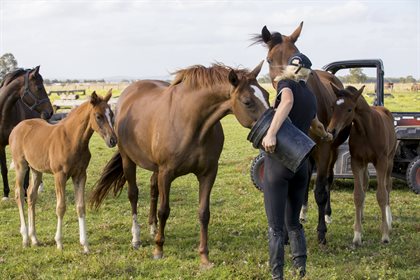|
This article first appeared in the April 2021 digital edition of Equestrian Life. To see what's in the current issue, click here.

We can all make a conscientious decision to improve the quality of our horses whilst putting the welfare of future generations first.
The benefits of genetic testing
Dr Maxine Brain
A sample of hairs from your horse’s mane or tail reveals a lot. Genetic testing can confirm or disprove parentage — and it can identify desirable traits or potential disease-causing genotypes when breeding.
Last month we looked at hair testing for heavy metal content (‘Heavy Metal Toxicities’ Equestrian Life March, 2021); this month we look at genetic testing in horses. Genetic testing is commonly done using hair samples. It can also be done using blood, but this has disadvantages associated with storage, transportation, life expectancy and ease of accessibility. Hair is much easier to collect and store compared to blood, and it can readily be transferred and stored for years.
Genetic testing requires the follicle that contains the DNA to be attached to the hair sample. It is important that a reputable, properly accredited laboratory examines the sample and that the reader interprets the results based on the scientific evidence available. Tail or mane hair is the preferred type of hair for submission to the lab and is generally easy for most people to collect.
There are several reasons to have genetic testing done on your horse, the most common being as a unique form of identification that cannot be changed. Hand in hand with this is confirming the sire and dam of the horse. A foal gets half of its DNA from each of its parents, thus, by identifying an individual by its DNA, it also verifies that the foal is out of the stated mare and by the stated stallion....
Read the full article here in the April 2021 issue of Equestrian Life!
|
